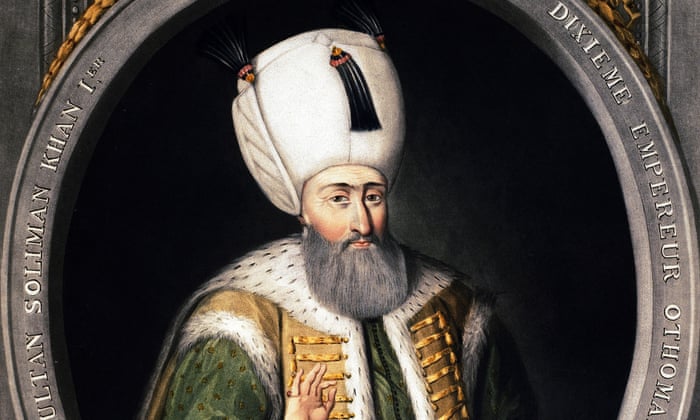Suleiman the Magnificent's tomb believed to have been found in Hungary
Historian says ‘in all certainty’ remains found near Szigetvar in southern Hungary point to resting place of 16th-century sultan of Ottoman Empire
Remains of the tomb of the Ottoman sultan Suleiman the Magnificent, who died in 1566 while his troops were besieging the fortress of Szigetvar in southern Hungary, are believed to have been found, a Hungarian historian has said.
Norbert Pap, of the University of Pecs, said the tomb is understood to have been built over the spot where Suleiman’s tent stood and where he died. Pap said objects suggesting it was Suleiman’s tomb were found during the dig, as well as other historical evidence, although more excavations were needed to confirm the find.
“We have data which all points in the same direction,” Pap said at a presentation of the latest findings on Wednesday. “That is why we say ‘in all certainty’, because there is no sign pointing in another direction. But more confirmation is needed, as this is a very delicate topic.”
Until his death at age 71, Suleiman was the Ottoman empire’s longest-ruling sultan. Under him the Turks greatly expanded their dominance in the Balkans, the Middle East and northern Africa during his 46-year reign.
What is believed to be the sultan’s tomb is located in the former Ottoman settlement of Turbek, which was destroyed in the 1680s. The settlement’s discovery was announced by Pap in 2013.
Historians believe Suleiman’s heart and internal organs were buried in the tomb and his body taken back to Constantinople, as Istanbul was then known. His death at Szigetvar was kept secret for 48 days to prevent his troops from giving up the fight.
Szigetvar was defended by locals led by Croatian-Hungarian nobleman Miklos Zrinyi. The siege was a pyrrhic victory for the Turks and delayed their ultimately unsuccessful advance toward Vienna for decades.
Pap said some other structures near the tomb, all still underground, are likely to be a small mosque and a dervish monastery. He said excavation work at the site would restart in April.


No comments:
Post a Comment